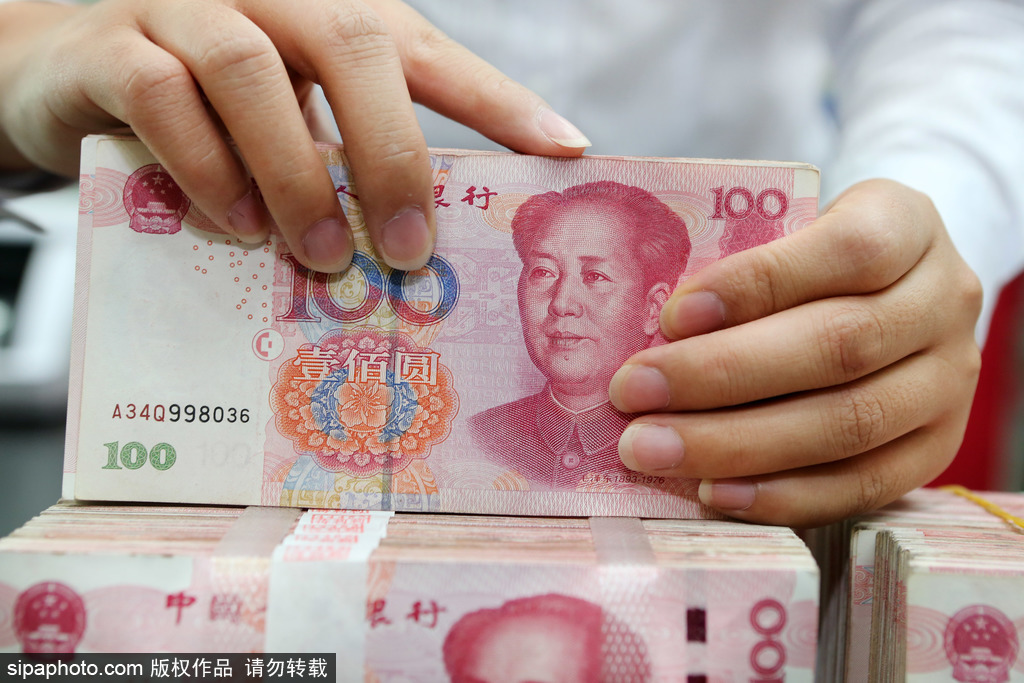China's broad money supply rises in April


Central bank considering more easing policies to support economic recovery
China's central bank will allow faster growth of money supply and credit to counter shocks of the coronavirus pandemic, putting more emphasis on economic growth and employment targets, experts said on Monday.
The People's Bank of China, the central bank, may target double-digit growth rates for broad money supply (M2) and aggregate financing for the rest of this year, said some policy advisers close to the PBOC.
On Monday, the central bank reported an 11.1-percent year-on-year growth of M2 by the end of April, the highest since January 2017. Aggregate financing rose by 12 percent during the period compared with 11.5 percent by March. New yuan loans stood at 1.7 trillion yuan ($239.8 billion) in April, compared with 2.85 trillion yuan in March, the PBOC data showed.
The accelerated growth of money supply and aggregate financing has proved that the central bank was adopting more easing policies to support economic recovery, economists said.
In its latest quarterly monetary policy report, the PBOC has changed its policy tone and stressed that the growth pace of M2 and aggregate financing would be slightly higher than the normal GDP growth, to ensure sufficient financial resources for rescuing enterprises hit by the virus.
The M2 growth rate retreated to a single-digit reading for the first time in history in April 2017, as the country launched a campaign to stabilize the debt-to-GDP ratio and implemented measures to reduce financial sector vulnerabilities. But it rebounded to a double-digit growth in March to 10.1 percent.
The central bank said to maintain a prudent monetary policy that will be more flexible, it will strengthen countercyclical adjustment and maintain liquidity at a reasonably ample level. China will be one of the few major economies that is implementing "normal" monetary policy, the PBOC said.
But in the first-quarter report, the PBOC removed the phrase "will avoid taking a flood irrigation type approach to easing", which was in the previous report for the fourth quarter of 2019. That may be a signal of further easing space for the monetary policy, in face of unprecedented economic challenges from the COVID-19 pandemic, said Ming Ming, an analyst with CITIC Securities.
Ming said the PBOC is likely to implement relending and rediscounting policies and expand credit support to virus-hit small and medium-sized enterprises.
The financial data and the PBOC's dovish monetary policy stance may lead to further monetary actions in the coming weeks, especially during the annual meeting of the National People's Congress, China's top legislature, which will start on May 22, said Li Chao, chief economist with Zheshang Securities.
"The central bank has a high probability of cutting the benchmark deposit rate in the future, which will lower the debt costs of commercial banks and encourage lending, and that could be announced during the annual session of the NPC," he said.
Li Zhennan, an economist with Goldman Sachs (Asia), expected another 20-basis-point cut in open market operations or medium-term lending facility rates, and another 100-basis-points drop in the reserve requirement ratio.
The next RRR cut has been announced and will take effect on Friday so as to release more liquidity into the financial sector. From 2018 to April this year, the PBOC has cut the RRR 10 times and released 8.5 trillion yuan. The average RRR has dropped to 9.4 percent from 14.9 percent, said the PBOC, adding that it has also provided liquidity support to small and medium-sized enterprises.
According to the PBOC report, around 80 percent of the previously announced 500 billion yuan of relending and rediscounting for SMEs has been disbursed, and the recently announced 1 trillion yuan of relending and rediscounting, which can cover around 10 percent of small and micro firms with borrowing records in the banking system, has also started to be implemented.




































